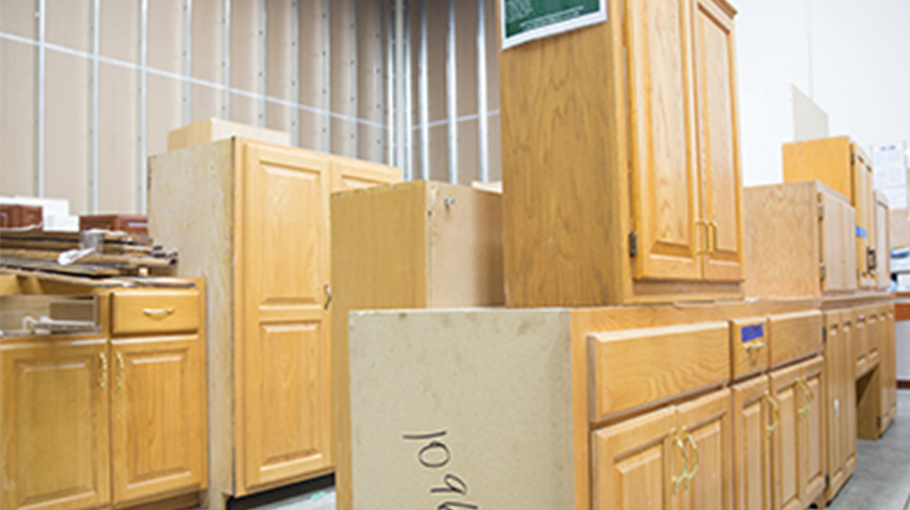Home remodeling can be a big source of waste—according to the U.S. EPA, it accounts for 22 percent of all the construction and demolition waste generated nationally. However, with a plan and a little extra time, much of that waste can be avoided or diverted for reuse or recycling.
Think ahead
Before you start your remodeling project, spend some time thinking about what types of waste will be generated. Then consider whether you can achieve the same desired outcomes without generating as much waste. First consider reduction, then reuse, and finally, recycling.
Reduce
Less is more. Smaller homes generate less waste over a lifetime of use and maintenance. Spend more per square foot on higher-quality materials and finishes instead of maximizing the total square footage of your project. Sarah Susanka’s website, Not So Big House, is a great resource for designing “not as big as you thought you needed” spaces to perfectly suit the way you live.
From avocado, orange and brown kitchens to shag carpet and tiled countertops: home trends come and go. Skip the latest ‘must-haves’ and stick to simple, classic designs and finishes that endure over time.
Reuse
Many furnishings and finishes can be reused rather than trashed. For example, cabinets and vanities can take on a new life with a fresh coat of paint or stain and new hardware. Sinks and tubs can be refreshed by replacing the faucet rather than the entire sink. Not only will you reduce waste by reusing, you'll save money.
If you aren’t able to reuse what you already have, you can still incorporate reuse into your project by buying used. Cabinets, flooring, sinks, light fixtures and much more can be found at used building material stores across the metro. Architectural Antiques, Bauer Brothers Salvage, Better Futures Minnesota, City Salvage, Guilded Salvage and Habitat for Humanity ReStore are all good options for used and period-specific building materials. Craigslist, eBay and online garage sale groups are also good options for finding used or surplus building materials.
In addition to selling used building materials, many of the home improvement retailers also accept donations, and some offer pick-up service. Make sure you share your reuse plans with your contractor so items aren’t destroyed during removal.
Better Futures Minnesota also offers deconstruction services, which is a process that carefully takes a building apart to preserve the materials for reuse. This method can be used rather than demolition for both partial and full building removal. Deconstruction takes longer and costs more, but tax credits for donating the building materials help reduce the cost, and this method can divert as much as 85 to 90 percent of the building material.
Recycling
After you've exhausted your reduction and reuse options, there are recycling opportunities for many materials. The gold standard for recycling construction and demolition debris is to sort the various materials onsite and then have them sent to the various processors of those materials. If your site only has room for a mixed-waste dumpster, make sure the dumpster is going to one of three processors in the Twin Cities that divert materials for recycling DemCon or Veit. These recycling processors take mixed construction and demolition waste, sort it, and divert 60 to 70 percent of the material from landfills. Let your contractor know before work starts that you want the material recycled at one of these three places and ask for the receipts to ensure it went where you specified.
Close the loop
When designing your project, close the waste loop by incorporating materials that contain recycled content. You can find many materials made with recycling content, including glass tile, carpet and latex paint.
With these resources, remember that although remodeling is stressful, managing your waste doesn't need to be.

